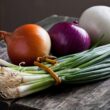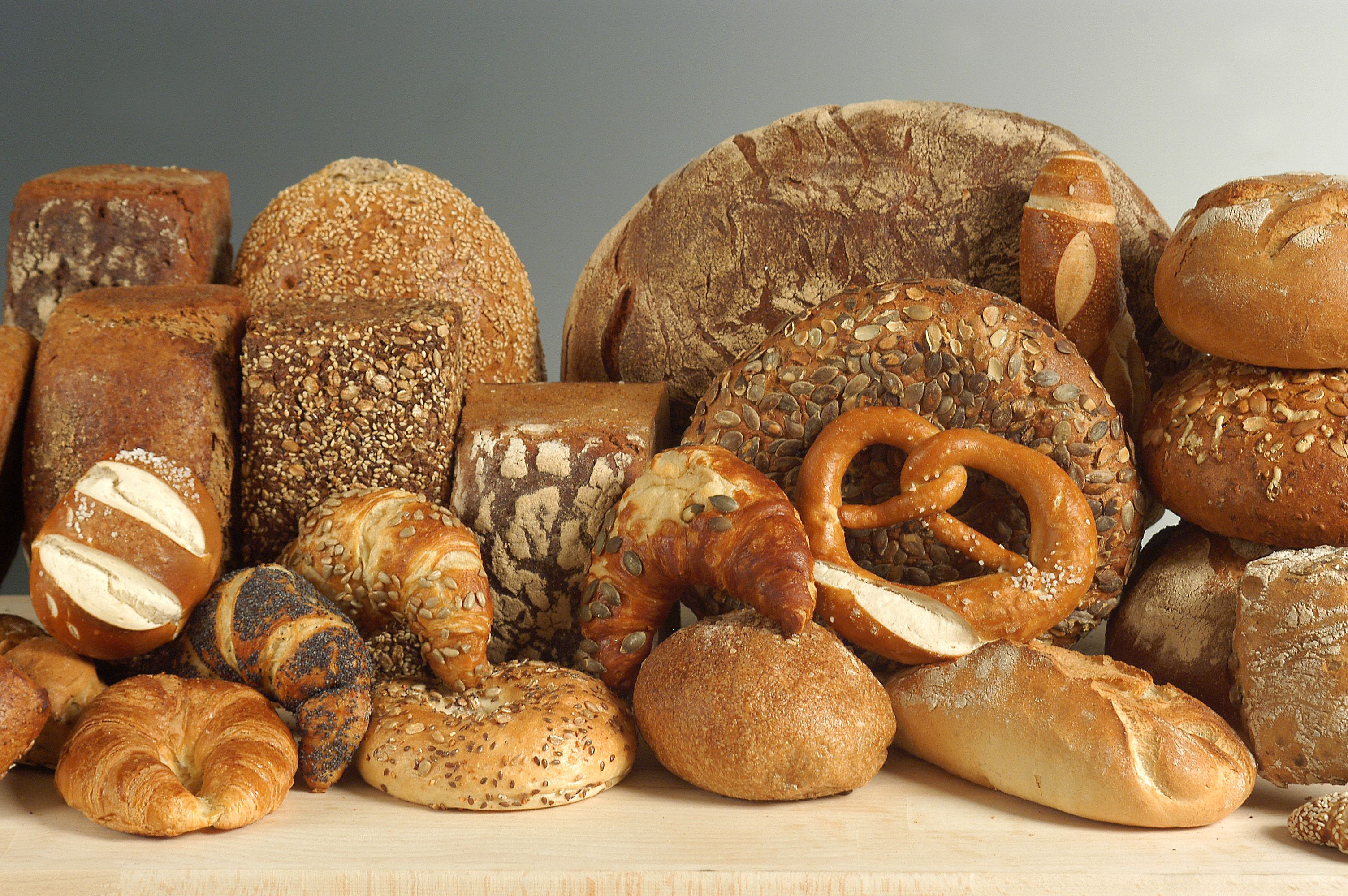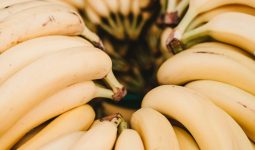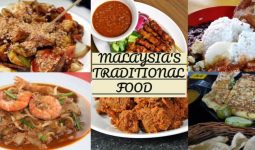Ever wondered why Germans consume over 80 kilograms of bread per person each year? The answer lies in their incredible bread diversity—with over 3,000 recognized varieties, Germany has earned UNESCO recognition for its bread culture.
You’re about to discover the fascinating world of different types of German bread, from dense, dark pumpernickel to delicate hörnchen rolls that melt in your mouth.
This isn’t just about carbs (though Germans do love their carbs). Understanding German bread types opens a window into centuries of tradition, regional pride, and culinary craftsmanship that’ll transform how you think about your morning toast.
Whether you’re planning a trip to Germany, wanting to recreate authentic flavors at home, or simply curious about why German bakeries are legendary worldwide, you’ll find everything you need right here.
Dreikornbrot (Three-grain bread)
Picture biting into a slice that combines the earthiness of rye, the nuttiness of wheat, and the heartiness of barley—that’s dreikornbrot in all its glory. This bread represents the German philosophy of “more is more” when it comes to nutrition and flavor complexity.
You’ll recognize dreikornbrot by its dense texture and slightly coarse appearance, often studded with visible grains that create delightful textural contrasts. The three grains work together beautifully: rye provides that characteristic tang, wheat adds structure and familiarity, while barley contributes a subtle sweetness that rounds out the flavor profile.
What makes dreikornbrot particularly appealing is its versatility. It holds up beautifully to hearty toppings like aged cheese and cold cuts, yet remains sophisticated enough for lighter fare. Many Germans reach for this bread when they want something substantial that won’t leave them feeling heavy—the multiple grains provide sustained energy without the crash you might get from refined breads.
Vollkornbrot (Whole grain bread)
When Germans say “vollkorn,” they mean business. This isn’t your typical grocery store “whole wheat” with a few token grains sprinkled on top. Vollkornbrot contains 90% or more whole grain flour, making it a nutritional powerhouse that’s become increasingly popular among health-conscious consumers.
The texture strikes you immediately—it’s dense, moist, and incredibly satisfying. Each slice feels substantial in your hand, and you’ll notice how filling even a small portion can be. The flavor profile is complex and slightly sour, thanks to the sourdough starter that’s typically used in traditional recipes.
Don’t expect this bread to be light or fluffy. Vollkornbrot represents the opposite philosophy—it’s about sustenance, nutrition, and keeping you satisfied for hours. Many Germans swear by a slice of vollkornbrot for breakfast, topped with butter and honey, as the perfect way to fuel their morning commute.
Hörnchen (Small croissant-like roll)
Think of hörnchen as Germany’s answer to the French croissant, though purists on both sides might bristle at that comparison. These crescent-shaped rolls are lighter than most German breads, with a tender crumb and golden exterior that makes them irresistible for breakfast or afternoon coffee.
The shape isn’t just for show—that curved form helps create the perfect ratio of crust to crumb. You’ll find the exterior slightly crispy when fresh, giving way to a soft, pillowy interior that practically begs for butter and jam. Unlike their French cousins, hörnchen contain less butter, making them less rich but more suitable for everyday consumption.
German bakeries typically produce hörnchen fresh each morning, and locals know to arrive early for the best selection. The rolls are perfect for those moments when you want something more special than regular bread but not as indulgent as a full pastry.
Pretzels (Brezeln)
Forget everything you know about mall pretzels—authentic German brezeln are in a league of their own. The distinctive twisted shape, glossy dark brown exterior, and coarse salt crystals are just the beginning of what makes these traditional German breads so special.
The secret lies in the lye bath. Before baking, each pretzel gets dipped in a sodium hydroxide solution that creates that characteristic mahogany color and unique flavor. It’s a technique that requires skill and confidence—too long in the lye and you’ll have bitter, dark spots; too short and you’ll miss that authentic pretzel taste.
You’ll notice the texture varies beautifully across each pretzel. The thick “body” portion is chewy and dense, while the thin “arms” become delightfully crispy. This textural contrast is intentional and part of what makes eating a proper pretzel such a satisfying experience. In Bavaria, they’re often served with sweet mustard or butter, though purists argue a good pretzel needs no accompaniment.
Brötchen (Bread rolls)
Brötchen are the workhorses of German bread culture—simple, reliable, and absolutely essential to daily life. These small, round rolls appear on virtually every German breakfast table and form the foundation of countless sandwiches throughout the day.
The beauty of brötchen lies in their versatility and perfect proportions. They’re substantial enough to hold generous fillings without falling apart, yet light enough that you won’t feel weighed down. The crust provides a satisfying crunch that gives way to a soft, airy interior with just enough chewiness to be interesting.
Regional variations abound, and Germans can be surprisingly passionate about their preferred style. Some prefer a softer crust, others want maximum crunch. Some like them perfectly round, while others appreciate a slightly irregular, handmade appearance. What remains constant is their role as the foundation of German sandwich culture.
Weißbrot (White bread)
Before you dismiss weißbrot as ordinary white bread, consider that German bakers have elevated this simple concept to an art form. This isn’t the squishy, preservative-laden loaf you might associate with white bread—German weißbrot has structure, flavor, and a proper crust that demands respect.
The crumb is fine and even, with a slight sweetness that comes from quality flour and proper fermentation. You’ll notice how well it toasts, developing a golden exterior while maintaining a soft interior. This makes it particularly popular for breakfast, where it serves as a neutral canvas for both sweet and savory toppings.
Many German families keep weißbrot on hand specifically for children or guests who might find darker, more intense breads overwhelming. It’s also the bread of choice for certain traditional preparations where a strong bread flavor would compete with delicate ingredients.
Weizenmischbrot (Wheat mixed bread)
Weizenmischbrot represents the perfect compromise between light and hearty. This bread combines wheat with a smaller percentage of rye, creating something that’s more substantial than pure wheat bread but less intense than full rye varieties.
The result is remarkably balanced—you get the familiar comfort of wheat bread with added complexity from the rye. The texture falls somewhere between fluffy and dense, making it suitable for a wide range of uses. It’s substantial enough for hearty German sausages yet refined enough for lighter fare.
This bread has gained popularity among Germans who want to eat more nutritiously without completely abandoning the lighter textures they enjoy. It’s often considered a gateway bread for those transitioning from white bread to heartier German varieties.
Mehrkornbrot (Multigrain bread)
Mehrkornbrot takes the concept of grain diversity to its logical conclusion. While the exact grain combination varies by baker and region, you’ll typically find at least four different grains, each contributing its own flavor and texture to the final product.
The appearance is distinctive—seeds and grains are visible throughout the loaf, creating an almost mosaic-like pattern when sliced. The texture is wonderfully complex, with different grains providing varying levels of chewiness and crunch. Some bites might emphasize the nuttiness of sunflower seeds, while others highlight the earthiness of rye or the sweetness of wheat.
This bread appeals to health-conscious consumers who appreciate the nutritional benefits of diverse grains, but it’s equally popular among those who simply enjoy complex flavors and textures. It’s particularly satisfying when toasted, as the heat brings out the individual characteristics of each grain.
Sonnenblumenkernbrot (Sunflower seed bread)
Sunflower seeds transform ordinary bread into something extraordinary. Sonnenblumenkernbrot features these nutritious seeds both mixed into the dough and often sprinkled on top, creating layers of nutty flavor and satisfying crunch.
The seeds don’t just add taste—they contribute healthy fats and protein that make this bread more filling and nutritious than many alternatives. You’ll notice how the seeds create textural interest throughout each slice, providing little bursts of richness that complement the bread’s base flavor.
Many Germans appreciate this bread for its staying power. The combination of complex carbohydrates and healthy fats means you’ll feel satisfied longer than you would with simpler breads. It’s particularly popular among active individuals who need sustained energy throughout their day.
Kürbiskernbrot (Pumpkin seed bread)
Pumpkin seeds, known as “Kürbiskerne” in German, give this bread a distinctive green tinge and rich, almost buttery flavor. These seeds are particularly popular in Austria and southern Germany, where pumpkin cultivation has deep roots.
The seeds provide more than just flavor—they contribute a unique texture that’s both creamy and crunchy. When you bite into kürbiskernbrot, you’ll experience the contrast between the soft bread matrix and the firm seeds, creating an almost luxurious mouthfeel.
This bread has gained popularity among food enthusiasts who appreciate its unique appearance and complex flavor profile. The pumpkin seeds are often toasted before incorporation, intensifying their nutty flavor and adding depth to the overall taste experience.
Zwiebelbrot (Onion bread)
Zwiebelbrot proves that Germans aren’t afraid of bold flavors. This savory bread incorporates caramelized onions into the dough, creating a deeply flavorful loaf that’s perfect for hearty meals or as an accompaniment to soups and stews.
The onions are typically cooked until golden and sweet before being folded into the dough, which means you get concentrated onion flavor without the sharp bite of raw onions. The result is a bread that’s aromatic, slightly sweet, and incredibly satisfying.
You’ll often find zwiebelbrot served alongside traditional German dishes where its robust flavor complements rich meats and strong cheeses. It’s particularly popular in beer gardens and traditional restaurants where bold flavors are celebrated.
Roggenbrot (Pure rye bread)
Roggenbrot represents the heart of German bread tradition. Made with 90% or more rye flour, this bread is dense, dark, and packed with the distinctive sour flavor that defines much of German baking.
The texture is notably different from wheat-based breads—it’s moist, dense, and almost cake-like in consistency. This isn’t a bread that bounces back when you press it; instead, it maintains its shape while providing a satisfying, substantial bite.
Rye bread requires different techniques than wheat bread, and German bakers have perfected these methods over centuries. The result is a bread that keeps well for days, actually improving in flavor as it ages. Many Germans prefer their roggenbrot a day or two old, when the flavors have had time to meld and develop.
Pumpernickel (Dense, dark rye bread)
Pumpernickel is perhaps the most misunderstood of all German breads. Authentic pumpernickel isn’t the thin, sweet slices you might find in American delis—it’s a dense, dark, intensely flavored bread that’s baked for up to 24 hours at low temperatures.
The extended baking process caramelizes the natural sugars in the rye, creating a deep, complex flavor that’s simultaneously sweet and earthy. The texture is incredibly dense—a thin slice is often sufficient for a serving. It’s moist, almost sticky, and has a distinctive dark color that comes from the long baking process rather than added molasses or artificial coloring.
Traditional pumpernickel is an acquired taste, but once you develop an appreciation for its intense flavor and unique texture, other breads can seem almost bland in comparison. It’s particularly popular paired with strong cheeses or cured meats that can stand up to its bold character.
Schwarzbrot (Black bread)
Schwarzbrot, literally “black bread,” encompasses several varieties of dark German breads that get their color from a combination of dark rye flour and extended baking times. These breads are the foundation of German bread culture and represent centuries of tradition.
The darkness isn’t just for show—it indicates a bread that’s been allowed to develop deep, complex flavors through proper fermentation and baking techniques. You’ll taste hints of molasses, coffee, and earth, with a slight sourness that comes from the sourdough starter that’s typically used.
These breads are designed to be filling and nutritious, providing sustained energy for working people. They’re often served in thin slices because of their density and intensity, paired with simple toppings that don’t compete with the bread’s robust flavor.
Dinkel/Dinkelbrot (Spelt bread)
Spelt, an ancient grain that’s experienced a renaissance in recent years, creates bread with a distinctive nutty flavor and appealing texture. Dinkelbrot offers many of the nutritional benefits of whole grain bread while maintaining a lighter, more approachable character than pure rye varieties.
The texture is pleasantly chewy without being dense, and the flavor is complex but not overwhelming. Many people who have sensitivity to modern wheat find they can tolerate spelt better, making this bread popular among health-conscious consumers.
Spelt bread has a slightly sweet, nutty flavor that works well with both sweet and savory toppings. It’s become increasingly popular in German bakeries as consumers seek alternatives to traditional wheat while still wanting familiar, satisfying textures.
Laugenbrötchen (Pretzel rolls)
Laugenbrötchen combine the best aspects of traditional pretzels with the convenience of rolls. These pretzel-flavored rolls go through the same lye bath process as full-sized pretzels, giving them that distinctive flavor and glossy, dark exterior.
The bite-sized format makes them perfect for sandwiches or as accompaniments to meals. You get all the complex flavors of a pretzel—the slight alkaline taste from the lye, the chewy texture, the coarse salt crystals—in a more versatile package.
These rolls are particularly popular at German breakfast buffets and beer gardens, where their bold flavor and sturdy structure make them ideal for holding hearty fillings. They’re also excellent on their own, perhaps with a touch of butter to highlight their unique flavor profile.
Understanding these different types of German bread opens up a world of flavors and traditions that extends far beyond simple sustenance. Each variety tells a story of regional preferences, historical influences, and the ongoing evolution of German baking culture. Whether you’re seeking the hearty satisfaction of vollkornbrot or the delicate pleasure of hörnchen, German bread offers something for every palate and occasion.








